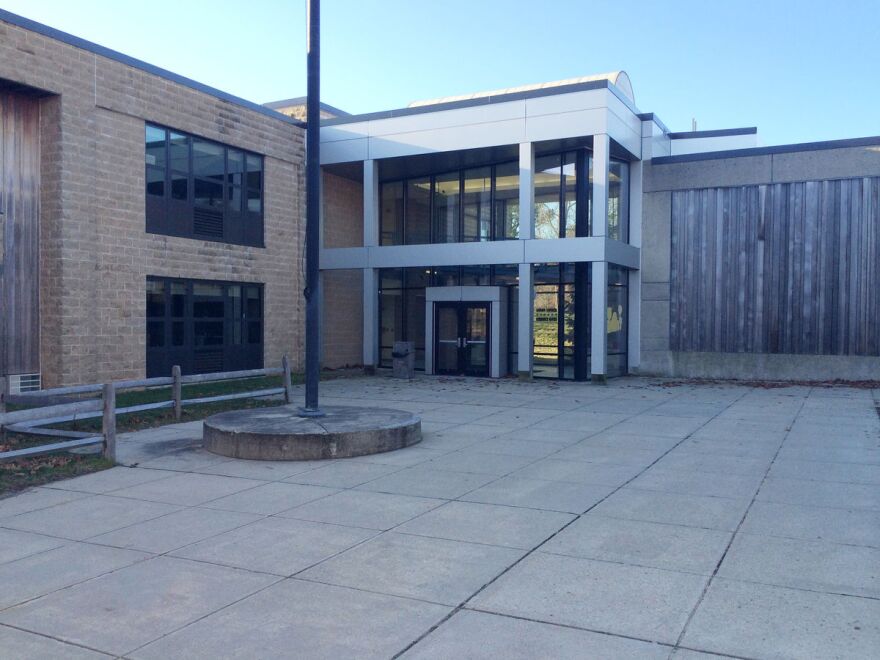The Cape has a little over 200,000 year-round residents, and just under 15 percent are school-aged children. It’s an unusual statistic—towns elsewhere in Massachusetts have numbers closer to 30 percent, and the Cape’s school-aged population is predicted to decline even more over the next decade. For some towns, the answer to this challenge is regionalization of schools; and for some parents, the answer is school choice.
This is the second story in our two-part series about declining school enrollment on Cape Cod. You can hear part one here.
At Nauset High School, on the edge of the National Seashore, teacher Lisa Brown gave a tour of the afterschool programs. She walked from the library to the band room to the school’s gym, where basketball tryouts were happening.
"We have everything from saving sea turtles, to youth against plastic, to feminism club and key club," Brown said. "There are so many afterschool programs here."
She added that given the school’s remote location on the Outer Cape, having afterschool activities is important to keep students engaged.
"I think that kids really feel safe and seen here, and that they’re willing to try all different kinds of things after school and before school, because there really isn’t a heck of a lot going on otherwise," she said.
Part of the reason the Nauset school district is able to have a wide array of afterschool programs, despite the Cape’s overall decline in school-aged children, is that it’s a regionalized district. This means it serves the towns of Brewster, Orleans, Eastham, Wellfleet, Truro, and Provincetown.
But it also has a significant portion of students who attend who don’t live in those towns. This is called school choice.
Nauset superintendent Tom Conrad said that these days, it’s those out-of-town students who are critical.
"At one time we were over a thousand students just in our region, and we’re just under 700 at this point," Conrad said.
This year, the school’s enrollment is still around a thousand, but nearly a quarter of those students now come from outside the district.
"Without a robust number of 'choice' kids coming in, we would clearly be in a position where we would be cutting programs," he said.
And while school choice can help to keep enrollment, and therefore programs and funding alive, it has also added an element of competition between districts on the Cape. The Dennis-Yarmouth school system, in response, has created a series of advertisements that run on local television and radio stations.
To an outsider, it might seem odd to hear a public school district being advertised, but superintendent Carol Woodbury said it’s necessary these days.
"I think it’s more important for you to get the word out about all the positive things your school is doing, because you’re in a school choice climate," she said.
She isn’t alone. Superintendent of Monomoy Schools Scott Carpenter agreed that he senses increased competition between districts these days.
"There is clearly a pervasive feeling of competition," he said. "'What do we need to do to keep our students here, to provide the programs and services that their families are looking for?'"
Even for these big, regionalized schools, there are some drawbacks to bringing in students from school choice. For one, parents have less input at town meetings.
"I think that there’s, at times, a loss for communities when you have families that are heading off and choicing out of your school district," he said. "There’s a loss of that vocal parent who’s advocating for the needs of the public schools in the town."
But for parents like Mike Seidewand, and for his four children, the decision to attend Nauset from out of the district made sense. The family lives in Chatham, about a 30-minute drive from Nauset. Back when his oldest children were high school aged, he said, school choice was key to them being able to attend a large school with diverse course offerings. Eventually, their town high school, Chatham High School, regionalized and became part of Monomoy Regional.
"I think the biggest thing was the lack of potential classes. If you don’t have a lot of kids, there aren’t as many teachers and as many courses offered, so they aren’t exposed to as much. When Chatham only had the 50, they were cutting things out because they just didn’t have the enrollment," he said.
His youngest son wanted to play football, and Nauset was large enough to have a football program.
"Having the option to do school choice...rather than having to go through high school with only 30 to 50 kids per class, it’s been a blessing for us," Seidewand said.
He said that while it’s a different highschool experience from what he experienced growing up - less small town, more big suburb - he’s thankful that his children have options.
--
This is the second story in our two-part series about declining school enrollment on Cape Cod. You can hear part one here.







